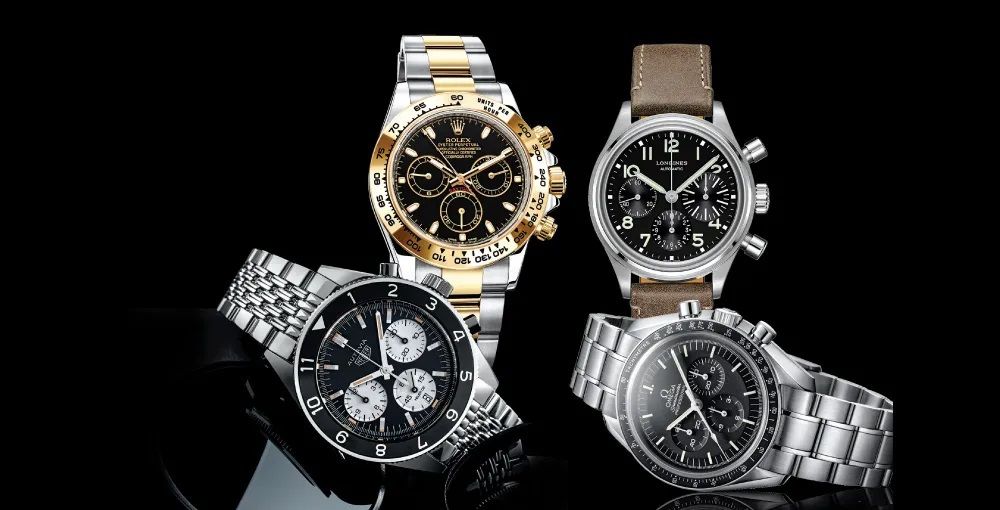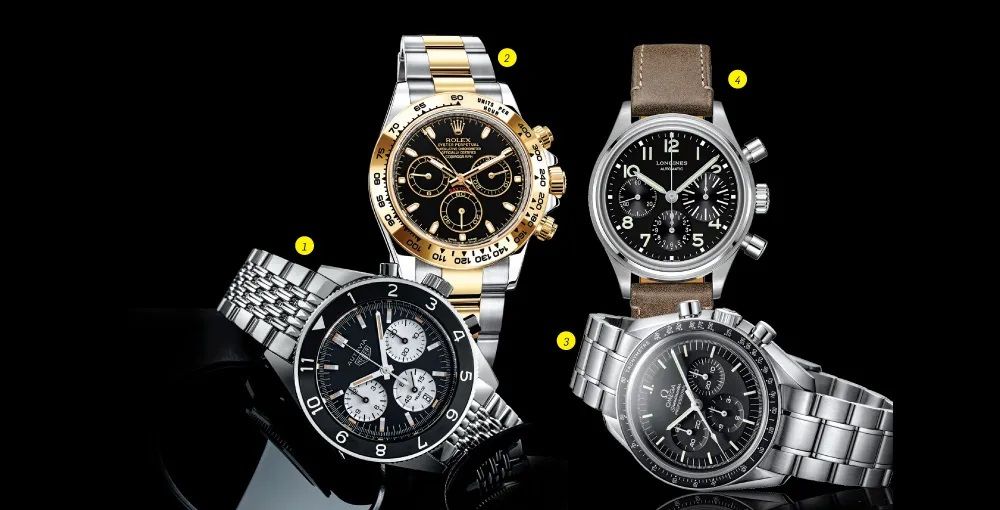Chronograph - The most popular complication in a mechanical watch
In the modern watchmaking world, we get to hear all kinds of tech jargon all the time. Brands like to amplify the usefulness and complexity of their timepieces by using new-fangled terms.

This month, we take a look at what has become the most popular – and perhaps also the most useful – complication in a mechanical watch, the chronograph.
In the modern watchmaking world, we get to hear all kinds of tech jargon all the time. Brands like to amplify the usefulness and complexity of their timepieces by using new-fangled terms. However, the word chronograph has been in the watchmaking world for over two centuries now, and is today perhaps the complication most commonly found in modern mechanical watches. And despite the technological advancements in electronics, chronographs still maintain their ease of use and practicality.
The word chronograph literally means ‘Time Writer’ and the first ever version was designed by French horologist, Louis Moinet, in 1815. As technological advances in time-keeping progressed, the first wearable chronographs were used in recording the times of the winners in French horse races by the then King of France – Louis XVIII – who loved the sport. And, unlike the past, where the winner of the races would be decided by who crossed the line first, timekeepers now had the ability to record the exact timing of the winner – essential for record keeping.
Soon enough, as technology was progressing across other sectors, chronographs found a use in other fields – such as motor racing, aviation and even deep sea diving. In fact, in the 1960’s, as the Swiss watchmaking industry was worried about the invention of the quartz movement by Seiko, chronographs proved their usefulness when the Apollo 13 space shuttle suffered a blast on-board over 200,000 miles from Earth in 1970. Where all the modern computers and other devices on the shuttle failed because of the blast, the three astronauts on-board were able to critically time the firing of an engine and alignment of their return capsule using their Omega Speedmaster chronographs, which President Eisenhower – himself a watch enthusiast and horologer – had made mandatory for all pilots and astronauts involved in space exploration a few years before. This usefulness and accuracy helped the three astronauts return safely to earth and once again brought chronographs into the mainstream.
And while most of us will likely never be in as critical a situation as the Apollo 13 astronauts, the chronograph still offers multiple practical uses. I myself use it to time things that are important, such as how long I’ve brewed my coffee, how long the eggs have been boiling and even to monitor my time spent on social media while at work. It might be commonplace, but the ubiquitous chronograph has many practical uses in everyday life. And celebrating this great invention, we look at four of the most iconic chronographs currently available in the market today.

1. Tag Heuer Autavia
Named using a combination of the first letters of the two words – AUTomobile and AVIAtion – the use of the Autavia, when it was first launched in 1962, was clear. It was a clear favourite among F1 drivers – Mario Andretti, Clay Regazzoni and Jochen Rindt all wore one – and made Tag Heuer a well-known brand amongst automotive and motor racing enthusiasts. This particular model was released in 2017 to celebrate the 55th anniversary of the original timepiece, all version of which are highly sought after.
2. Rolex Daytona Cosmograph
Perhaps the most recognizable chronograph on the planet, the Daytona has been made famous by many, many legends. Perhaps the most of them all is race car driver and team owner Paul Newman, whose personal Daytona set a record for the most expensive watch ever sold at a public auction at a mind-boggling figure of $17.8 million. The Daytona has adorned the wrists of Le Mans and Daytona 24-Hour winning drivers for decades now, as part of the prize for winning a pair of the most prestigious races in the world. No wonder than that it’s so sought after in automotive circles.
3. Omega Speedmaster
As the main story of this feature elaborates, the Speedmaster hardly needs an introduction when it comes to chronographs. It’s the official watch for all astronauts of NASA, and has been part of their space missions since the very start. In fact, when Buzz Aldrin first stepped on the moon’s surface in 1969, he was wearing a Speedmaster. With that degree of lineage, it’s not surprising to see the Speedmaster being one of the most sought-after Omega timepieces.
4. Longines Avigation Big Eye
This recent release from Longines harks back to the 60’s, when all Swiss watchmakers produced watches to what was known as the Type 20 standard to conform to the specifications released for the French Air Force. The watches had to be very specific – black dials with white lettering with sub-registers for the chronograph function – leaving them looking uncluttered and easy to read for pilots. Longines recently discovered that they themselves produced these pieces in the 50’s and 60’s thanks to a watch showed to them by a collector. And such was the appeal of its design that they’ve done a modern version of the watch. In the interests of honesty though, I must admit that I loved the design of the Avigation Big Eye so much that I personally own one now – and it’s fantastic!

This image highlights the number of individual components that go into a typical chronograph movement. What you see here is the Tag Heuer Autavia broken up into its individual parts.
Read More:















.webp)





Write your Comment on